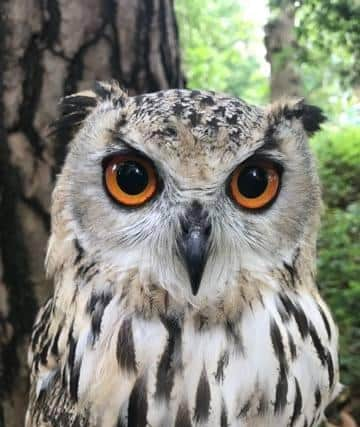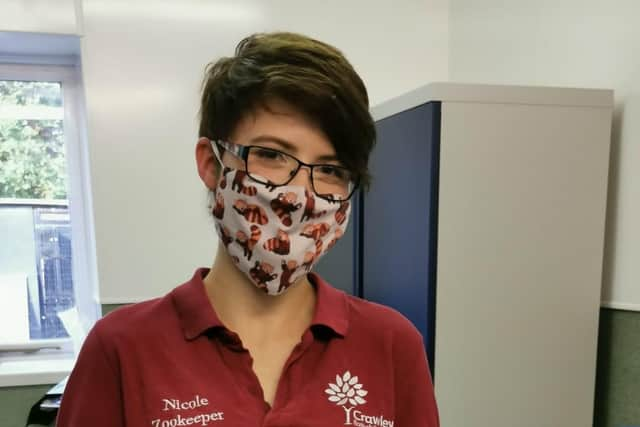Inside look at Crawley’s Tilgate Nature Centre: Here’s a day in the life of a Zookeeper
and live on Freeview channel 276
Tilgate Park Nature Centre is a top tourist attraction having been inducted into the Trip Advisor Hall of Fame and the park as a whole receives upwards of 750,000 visitors per year.The nature centre is located in Tilgate Park and houses over 100 different species, from otters to owls, tapir to terrapins, reindeer to raccoon dogs.
As part of a dynamic team caring for a collection of around 500 animals, candidates will be involved in all aspects of the zoo, from visitor experience and enclosure creation through to animal welfare and conservation.
Advertisement
Hide AdAdvertisement
Hide AdCandidates will have relevant practical experience in the husbandry of a wide range of species and have an animal care qualification. The responsibilities of the role also include routine cleaning, enclosure and grounds maintenance tasks. Applicants will have responsibility for a wide range of animals including exotic animals and have experience across taxa.


Here is a look at Senior Team Lead Nicole Hatcher's day at Tilgate Nature Centre:
8.30am: We always make a special effort to say good morning to each other as much of the day can be spent with just the animals that we look after. We start the day by carrying out routines with the animals in our sections. My section includes the serval, our Bengal eagle owl and the isolation area. Our isolation area is used when we get new animals in which need to be quarantined before going on show. Every animal is fed and given fresh water. The enclosure is then spot cleaned and I carry out visual health checks on the animals.
10am: Time for food preparation. We need to make all the food for the next day which includes fresh fruit and vegetables, pellet foods, and meat.
Advertisement
Hide AdAdvertisement
Hide Ad10.30am: Every Wednesday, the team gets together and picks a maintenance task. We are a close-knit team so this is great for team building as we often work on our own for most of the time. Today we are clearing off the boardwalk in preparation for a health and safety check with a view to possibly opening this area to the public. This involves moving scrap wood and clearing vegetation.


11.30am: Time for total cleans. Today is a total clean of the serval which includes removing all of their bedding, disinfecting the floor, and then replacing the bedding with fresh materials.
12.30pm: It’s lunchtime! I usually eat my lunch in the mess room with colleagues. It is nice to get together and relax.
1pm: Now it is time for the animal’s lunch. I go round and do the second feed of the day and check on the animals in my sections – you never know what they have been up to! I make sure that they haven’t damaged the enclosure or hurt themselves and ensure they aren’t acting out of the ordinary.
Advertisement
Hide AdAdvertisement
Hide Ad1.30pm: Today I’m spending some time training the serval for recall so we can get them to come back indoors if needed. I’m also spending some time target training the lemurs. These are one of the few animals we do not go in with as they can be quite aggressive and have big teeth! I’m training them to touch their nose to a ball which actually helps us to do a health check and weigh them.
2pm: More spot cleaning of the messy areas for the various species around the zoo and isolation area.
2.45pm: Time for some enrichment activities. This essentially means making toys for the animals to keep them entertained or things that mean they take longer to feed. Today I’m focusing on scent by using wool from the Alpacas for the serval to roll around in.
3.15pm: I find a corner and settle down to do some paperwork and admin tasks. We need to keep a record of the temperatures of the animals as well as how they are and what they have eaten. We upload all of this information onto special zoo software. This is the time I would usually also put in an order for supplies, feeding, equipment or bedding.
Advertisement
Hide AdAdvertisement
Hide Ad4:30pm: Time to start the evening feeds for the animals. As keepers take it in turns to stay late each day, we cover each other’s sections in the evenings. This means each member of the nature centre staff can cover each section of the zoo. I will usually have three sections to lock up, which can range from the goats in domestics to the tapir in the Americas. A few animals are shut into their houses for the night to help keep them safe and everyone is visually checked.
6:00pm: Time to do the washing up! With over 100 species at the zoo, there are a lot of bowls to clean!
6.30pm (ish): Hometime!”
The center’s shared values and behaviours reflect the special nature of our council. The centre encourages all colleagues to put them into practice, whatever job they do.
See more: Crawley’s Tilgate Nature Centre is looking for a new Zookeeper this summer, Another consultation could be held on Tilgate Park dog restrictions, Meet the Sussex cat that thinks he's Elvis ... and leaves dogs all shook up
Advertisement
Hide AdAdvertisement
Hide AdThe council is committed to safeguarding and promoting the welfare of children, young people, and vulnerable adults and expects all staff and volunteers to share this commitment. The council wants to be an inclusive and diverse employer of first choice reflecting the community we serve and particularly welcome applications from all underrepresented groups.